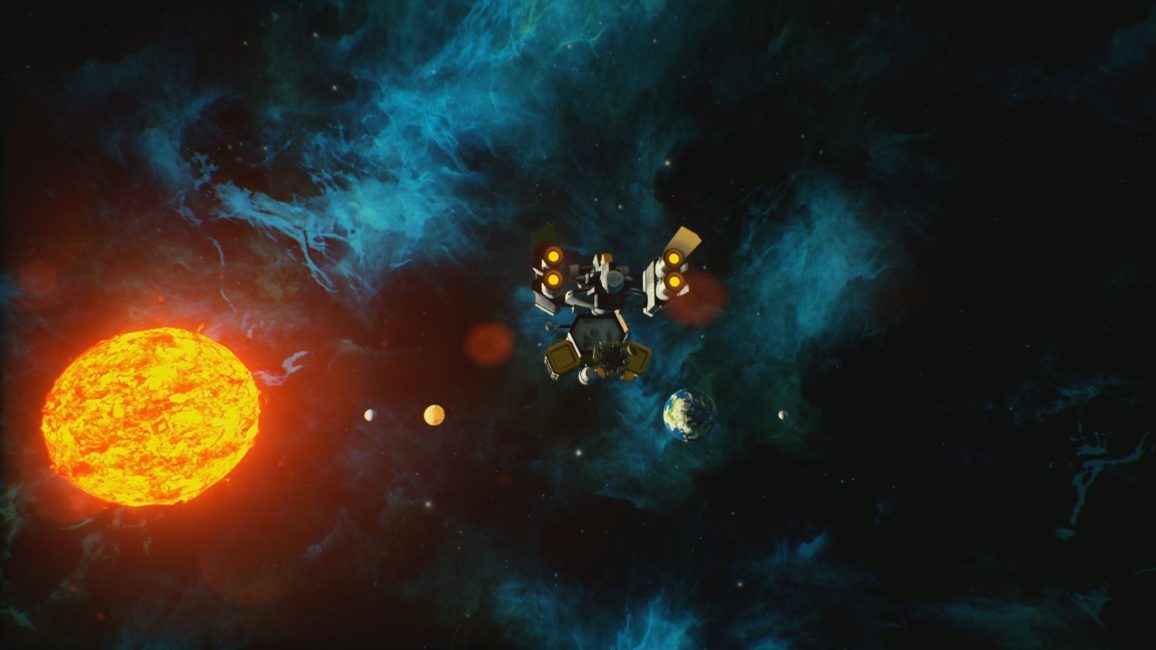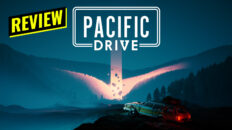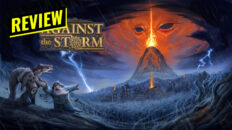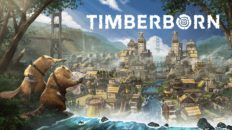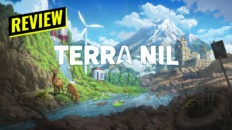Developer: Daedalic Studio West
Publisher: Daedalic Entertainment
Reviewed on: PC
Code Received.
Space is a tough place to find yourself lost in, just watch the TV show. The Long Journey Home puts you in command of a four person crew tasked with exploring the stars, but you quickly find yourself tossed to the other side of the galaxy with nothing but your meager supplies and wits to keep you alive. The Long Journey Home takes gameplay mechanics and systems from other roguelike games and attempts to blend them together into something original, however, this journey proves to be just as arduous as it is long.
This game is all about risk vs. reward. Literally everything you do has some sort of consequence; your crew may get burned from the radiation if you fly too close to a star, slightly bump your lander into a planet’s surface and the pilot may break his or her arm, and you can even find yourself running out of fuel inches from a resupply station. Most of these hazards can be avoided through careful planning, but they make the first few hours of the game very challenging while you try to learn all the game’s complexities. There are tutorials to help you with the basics, but you’ll need to learn most of the game’s systems through trial and error.

At the outset of each run you get to choose your ship, lander, and four starting crew members. The different ships offer a balance between maneuverability, cargo space, and hull strength. Landers are a little less varied, but offer the similar trade offs. Each crew member, on the other hand, comes with a unique perk. Some are straight forward like an item that can repair your ship’s hull, but others are more ambiguous like a crystal skull or pills only that specific crew member can take. As you play the game you learn what ships and crew members offer you the best chance of success.
The gameplay in The Long Journey Home is split into three main pillars: Spaceflight, planetary exploration, and ship/crew management. Spaceflight and planetary exploration put you in direct control of their corresponding crafts from a top down or side scrolling perspective, respectfully. You will control your ship as you navigate each solar system, investigating the various planets and objects they contain.
The way you control your ship is rather unruly. You really don’t have direct control of the the speed and direction you are traveling, you have to use your momentum and inertia to get in the general vicinity of where you want to be. Not only is it a difficult system learn, but it never truly feels “right”. Slamming into planets, suns, and missing targets will be something you’ll have to deal with for the duration of the game. A larger field of view could be remedy this because most of the things I collided with appeared suddenly from off screen, not giving me enough time to react to them. Other times an alien ship may interrupt you while performing an intricate maneuver and once the interaction is over, you will be randomly tossed back into the solar system, sometimes inches from a planet with no time to react, resulting in damage to your ship and/or crew members.
These unwieldy controls carry over into the lander sequences as well. You explore planets using your small landing craft and each planet has it’s own environment. High gravity will pull you down quickly, smashing the lander into the surface. Lightening storms will zap the lander, and high heat will cook your pilot. You can mitigate some of these hazards by installing modules onto your lander, but you have to have enough money to afford them. It’s a constant game of boosting just enough to not crash into the ground, but not so much that you overshoot your destination. These sequences control a lot like Lunar Lander or Rare’s Jetpac series of games.

The rewards for exploring these planets are resources that can be used to refuel and repair your ship and lander. You can also find structures to investigate on the surface that will reward you with alien animals, plants, or artifacts. These can be traded with merchants for space money, that can then be used to buy modules, supplies, fuel, and repairs. It’s a fairly simple system that requires you to engage with the dangers of exploration in order to progress. However, it often results in a zero sum experience because all these activities cause damage to your equipment and drain your fuel. Even if you manage to nail a perfect landing, drilling for ore causes damage to your lander and subsystems. I never had a run where I felt like I was close to breaking even, nevermind coming out on top with a surplus of resources or money.
The third pillar, ship and crew management, is actually the simplest. Through a series of screens you can check your crew’s status, repair and refuel your ship, install modules, and check your objectives. This menu isn’t very fluid and everything is spread out over many pages that you must cycle through. The information could have been easily condensed to a few screens to more easily provide you with the pertinent information you need.
I was also hoping this screen would give you unique insights into the personalities of your crew members, but sadly none of that exists. You get small quips here and there from them, but nothing that makes you feel emotionally attached to them. They also don’t gain experience over time, they just “earn” injuries that they complain about, so they usually feel more like burdens rather than valuable assets. You also technically only need one crew member alive to complete your mission, so even when they die the impact isn’t all that substantial.
As each galaxy is procedurally generated, there are naturally randomized events that you must contend with. In fact, there are some events that can either propel you to an early success or immediate defeat, two things that I feel throw the balance of the game off. On one run, I encountered an alien race that rewarded me with a substantial sum of money, which allowed me to buy all sorts of tools and supplies to get me very far into the game. On another run, I immediately encountered a hostile alien race that chased me until I eventually ran out of fuel and they destroyed me. The rest of the randomization seems more balanced, although, I eventually ran into the hostile aliens on every run I did.

The Long Journey Home has some amazing art and great looking environment. Most of the planets you explore are unique and range from hazy, tropical forests to molten oceans of lava. There are also some scripted scenes that look quite stunning. On the other hand, the crew models and ship menus leave a lot to be desired. It feels like a different game with a different, far more simplistic art direction. It gets the job done, but pales in comparison to beauty of flying by a White Dwarf star or landing on an exotic planet.
The Long Journey Home tries to bring together a lot of mechanics from other, similar games. There’s some FLT here, some Rebel Galaxy, and a lot of Lunar Lander, but none of what made these games special. Each run takes too long to ramp up, so the sudden failures that can crop up are far more disappointing than say a bad run in FTL. Having to constantly fight with the controls makes even the moment to moment feel frustrating. The randomization is limited and transparent. There is a certain level of satisfaction from extracting much needed minerals from a treacherous planet, but all that fades away when you realize those minerals only fixed half of the damage you sustained performing the extraction. At a certain point you wonder if The Long Journey Home is even worth making.
[full_width]PC Specs:
Windows 10 Pro 64-bit
Intel Core i7-4790K 4.0GHz
16GB RAM
GeForce GTX 980 Ti 6GB VRAM
Samsung EVO 850 SSD[/full_width]


